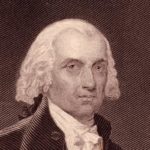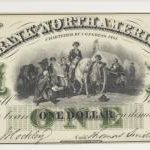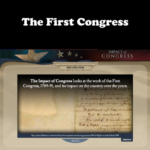The Impact of Congress looks at the work of the First Congress, 1789-91, and its impact on the country over the years. In this module you will learn about eleven of the First Congress’s most important accomplishments through primary source images and documents – accomplishments that still have a major impact on our country today. Then you will pick a later session of Congress and explore and analyze its accomplishments.
Beard v. Banks (2006)
Does a prison’s policy on restricting print publications and photographs violate prisoners’ First Amendment rights? This case summary shows how the Supreme Court answered that question in 2006.
The Constitution in Action: Strict vs. Loose Construction
History is the chronicle of choices made by actors/agents/protagonists in specific contexts. This simulation places students in the Early Republic and asks them to engage with questions of Constitutional interpretation faced by President Washington and the First Federal Congress. Did the Constitution empower Congress to charter a national bank? Finance and maintain lighthouses? Regulate working conditions of merchant seamen? Support higher education?
McCulloch v. Maryland (1819) Middle School Level
Did Congress have the authority under the Constitution to commission a national bank? If so, did the state of Maryland have the authority to tax a branch of the national bank operating within its borders? High school level also available.
This case summary provides teachers with everything they need to teach about McCulloch v. Maryland (1819). It contains background information in the form of summaries and important vocabulary at three different reading levels, as well a review of relevant legal concepts, diagram of how the case moved through the court system, and summary of the decision. This resource also includes seven classroom-ready activities that teach about the case using interactive methods.
James Madison Lesson 2: The Second National Bank—Powers Not Specified in the Constitution

In this lesson, students examine the First and Second National Banks and whether or not such a bank’s powers are constitutional or unconstitutional.
How should the Constitution be applied to situations not specified in the text? How can balance be achieved between the power of the states and that of the federal government? How can a balance of power be achieved among the three branches of the federal government? In this lesson, Madison’s words will help students understand the constitutional issues involved in some controversies that arose during Madison’s presidency.
Economics through the Long History of America’s First Bank

Capitalism and the American nation have long been bedfellows; after all, they are both the children of eighteenth century Neo-Classical Liberalism. It is worth noting that both the “Declaration of Independence” and Adam Smith’s “Wealth of Nations” were presented to the public in the same fateful year of 1776. However, the America of Revolutionary days certainly was neither the financial nor business force that it is today, and understanding how the nation came to be so closely linked to capital is an important understanding.
